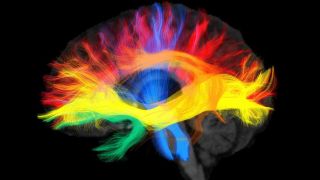It is the great fight for the sale, where brands do everything possible to attract consumers – there are those who speak directly of “manipulation” -. This is where the science of neuromarketing comes into play.
Beyond manipulative opinions, neuromarketing is based on neuroscience and neuropsychology, and studies how the brain responds to the stimuli, for example, from advertising messages.
As stated by the psychiatrist Carl Gustav Jung (1875-1961) “the great decisions implicit in human life have as a general rule much more to do with instincts and other mysterious unconscious factors than with conscientious aspects and well-intentioned reasonableness. “
Unconscious decisions
For this reason, possibly the choice of that brand of soft drink that we like to buy so much has to do more with unconscious and emotional factors of our brain than with other more rational elements.
And it’s hard to escape these emotional factors because, as much as we want to be rational, the primitive (instinctive) brain and limbic (emotional) always prevail on the rational part of it.
Neuromarketing is used in a multitude of sectors, and one of the most outstanding, in addition to advertising, is that of mass consumption food. Beyond the curious aspect that the word of neuromarketing can awaken, its reliability is based on scientific evidence with the objective of seducing the consumer and making them loyal using various techniques. Evidence that most of us consumers are oblivious to.
The deliberate diversion of the carts
For example, did you know that the bigger the shopping cart, the more we fill it? Another classic of large shopping centers: cart wheels always drift toward the shelf to encourage you to buy more.
There are some well-known techniques: the products on the shelves that are most interested in selling are within our reach and our hands. And they are the ones that are sold the most. Those who are not interested in selling or promoting are those that are placed in the lowest part.
The words “free”, “offer”, “discounts”, “clearance” or “sale” are a brain magnet of the consumer. The example of price € 9.99 It is almost the same as € 10, but our brain perceives the € 9.99 much cheaper for a single cent of a euro. There are numerous cases in this sense that they use prices to sell more.
Another technique is that of air conditioning. We know that the human being moves comfortably at a temperature of 22-23 degrees. When it is colder or hotter we feel more uncomfortable and buy less.
We surrender to pleasant smells
Experiential or sensory marketing is also very important for neuromarketing. Olfactory marketing is a widely used technique: who has not fallen rendered to the smell of fresh bread passing a bakery?
The brain not only remembers smells much better, but processes them at higher levels than the sense of sight. We can recognize and evoke childhood memories just by smelling a perfume. The floral fragrances suggest feminism and the woody ones provoke feelings of masculinity.
Some music to make shopping easier
Music (auditory neuromarketing) is also a prominent technique in the brain’s response to purchase impulses. A soft melody invites us to relax and recreate. Instead, a music with more rhythm makes the purchase process faster.
Auditory neuromarketing too segment by profile types, trying to move each target audience profile by challenging the universal emotions that music and its different rhythms arouse.
Branding and packaging They are also techniques that help brands to better position themselves in the market, communicate their identity and thus achieve a competitive advantage with advertising messages that positively impact the consumer’s mind.
If we keep in mind that up to two-thirds of information reaches the brain through sight, we will realize the importance of the entire branding, merchandising and communication process at the point of sale.
It is enough to mention how all the shapes, lines, volumes and colors of all packaging are worked from neuromarketing, from the product itself, through the wrapping and packaging. Everything, bearing in mind the characteristics of the consumer profile to which it is directed in sensory and emotional terms, as with auditory branding.
The better the heavier
A bottle of a luxury perfume or a bottle of an exquisite wine is always accompanied by a bottle and a wrapping to match the product. The container weighs more than a normal bottle, and this extra weight makes the consumer perceives it with more value.
Another example would be the redesign of a container with other colors and shapes through which the consumer perceives the product as healthy or more natural. For example, the color blue is associated with freshness and green causes sensations related to nature.
Each and every one of the techniques used (an advertisement, a container, a promotional product, the design, the smell, the music, the price, the shapes …) are perfectly analyzed by the neuromarketing tools – after all, it is still a market research to observe how the customer reacts – with the single goal of seducing the consumer to sell more.
Keep in mind that 85% of purchase decisions are unconscious. Brands know this, and for that reason they use all the neuromarketing techniques and tools at their fingertips, but even so they don’t have it easy: the brain only allows us access to approximately 1% of the total information that comes from the environment .
Jordi Campo, Professor of Marketing at the University of Barcelona.
This article was originally published on The Conversation. Read the original.













